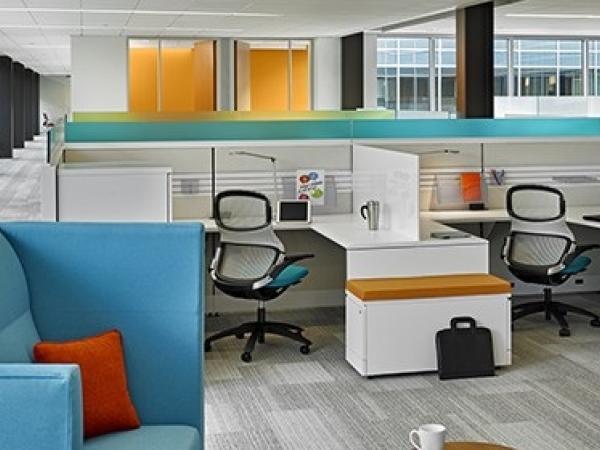
Date: 20 January 2016
But with an abundance of windows can also come an abundance of challenges.Most would agree that you can never have too many windows in a building; but would also agree that glass poses significant challenges when it comes to solar control.Traditional low-e glass does not fully control heat gain or glare, creating an uncomfortable environment for building occupants. The common solution for this problem is typically clunky blinds and shades, which create a barrier to the outdoors and impact the aesthetics of a space.
So, how can you incorporate more natural light to create a comfortable, healthy environment and beautiful space for building occupants?
1) Look Beyond Traditional Glass & Window Coverings
Traditional paned glass cannot control heat gain or glare associated with daylight, and an uncontrolled amount of natural light can have negative implications on the building occupant as well as energy-efficiency goals. Buildings that are unable to account for the daylight’s maximum intensity may be unable to achieve LEED v4 certification, which is increasingly important in our current architecture landscape where LEED certification is now virtually a requirement, rather than nice-to-have.
Dynamic glass, by tinting to manage the sun’s rays at any given time of the day, allows building occupants to experience the biophilic effects of the outdoors, and also achieve energy-efficiency goals by limiting the need for energy-intensive HVAC systems. Additionally, dynamic glass’ ability to adjust to the sun, combats the negative effects of solar glare and heat gain, and also improves occupant comfort by creating a more comfortable thermal environment. What’s more, dynamic glass eliminates the need for bulky blinds and shades!
2) Control Artificial Light in Real-Time
Daylight-responsive sensors allow you to take advantage of the natural lighting the building was designed to incorporate. When the proper amount of natural light is available, these sensors dim light fixtures, allowing spaces to only be illuminated when and if they need to be. They help buildings achieve their energy-efficiency goals by ensuring they do not rely too heavily on overhead electric lighting, and are only using electric light when it is necessary.
Additionally, by optimizing the building’s natural lighting, daylight-responsive sensors help to minimize glare, and as a result increase overall productivity and building occupant well-being.
3) Create an Interior Conducive to Daylight
White walls, ceilings and workstation panels reflect natural light. Thus, you can use this white color to take advantage of the natural light in buildings. However, when incorporating reflective materials, you must be able to control the amount of light in the buildings, otherwise, reflecting this light could have negative side effects, including increased glare.
If implemented properly, reflecting this natural daylight can provide positive results for your building occupants. In higher education, natural daylighting can impact learning, with research showing that students in day lit environments progressed 20-26% faster. In healthcare settings, connection to natural daylight is linked to increased recovery rates and reduced staff and family stress. And, in the office environment, day lit views can relieve deficient workplace productivity, including absenteeism, loss of focus, negative mood and poor health.
Knowing these tips, it’s clear that we no longer need to shy away from the challenges of incorporating more glass and natural light into buildings. Solutions such as dynamic glazing open up new aspects of design freedom and will have a positive impact on the productivity and satisfaction of building occupants for years to come.
 600450
600450




















Add new comment